Search This Blog
Wednesday, August 31, 2011
Day Of The Wolves (1971)
Gomorrah (2008)
Tuesday, August 30, 2011
Mars Attacks! (1996)
Oliver Twist (1948)
Monday, August 29, 2011
Wichita (1955)
Wyatt Earp (Joel McCrea) arrives in Wichita, Kansas with the intention of setting up a small business. But he discovers Wichita is a wide open, lawless town where anything goes. When offered the job of town marshal he declines ... at first. Directed by Jacques Tourneur of CAT PEOPLE fame, this is an efficient, economical western with modest aims. The film feeds off the legend of Wyatt Earp while paying little heed to the actual facts. At 50, McCrea is a bit mature to be playing Wyatt at this stage of Earp's life and his romancing of the 26 year old Vera Miles seems awkward, especially when he's closer in age to the 45 year old Mae Clarke who plays Miles' mother. The film was shot in CinemaScope but Harold Lipstein (HELLER IN PINK TIGHTS) doesn't utilize the format to its full advantage though the film has a nice clean look to it. The colorless score is by Hans Salter. With Lloyd Bridges, Peter Graves, John Smith, Keith Larsen (as Bat Masterson), Edgar Buchanan, Carl Benton Reid, Jack Elam, Robert J. Wilke and as a bank teller in a hold up, future director Sam Peckinpah.
Lady Of Burlesque (1943)
Sunday, August 28, 2011
Yao A Yao Yao Dao Waipo Qiao (aka Shanghai Triad) (1995)
Saturday, August 27, 2011
Twelfth Night (1969)
After being shipwrecked on a foreign shore, a young woman (Joan Plowright) disguises herself as a male and enters the service of a Duke (Gary Raymond), who sends her to plead his case as a suitor to the grieving Olivia (Adrienne Corri). Things become complicated when Plowright in her male trappings falls for the Duke while Olivia falls for Plowright in her male guise. Arguably the greatest of Shakespeare's comedies, this production as directed by John Sichel receives a robust treatment albeit stagebound. The mistaken identities and confusion between Viola (as Cesario) and Sebastian has always required a suspension of belief as they are normally played by two different actors. Here, Joan Plowright plays both sister and brother (and very well) so no suspension of belief is required. If Alec Guinness as Malvolio is too restrained to get the laughs he should, there's no such timidity from Ralph Richardson who milks Sir Toby Belch for every chuckle. John Moffat makes for a splendid dolt as Sir Andrew Aguecheek and Sheila Reid is a spunky Maria. Understandably, Tommy Steele seems a mite uncomfortable as Feste, the fool. There has been some minor editing of the Shakespeare text, however.
Don't Be Afraid Of The Dark (2011)
Friday, August 26, 2011
Margaret's Museum (1995)
Set in a mining town in 1940's Nova Scotia, a young girl (Helena Bonham Carter, who carries the film on her acting shoulders) falls in love with a gangly miner (Clive Russell) against her mother's (Kate Nelligan) wishes. Having lost both her husband and a son to the mines, she wants something better for her daughter. This critically acclaimed film won six Genie (the Canadian Oscars) awards including acting awards for Bonham Carter for actress, Nelligan for supporting actress and Kenneth Welsh (he plays an uncle) for supporting actor but its reputation seems to not have traveled much farther than its Canadian borders. It's too bad because although it's a grim film, it's not depressing and one can't help but be reminded of John Ford's HOW GREEN WAS MY VALLEY. It's realistic without any of the usual Hollywood cliches and filler material and has a feeling for its simple but fierce mining community without being condescending. The windswept Nova Scotia locations are lovingly shot by Vic Sarin and the muted score is by Milan Kymlicka. Directed by Mort Ransen and based on the novel by Sheldon Currie.
The Knack ...And How To Get It (1965)
Thursday, August 25, 2011
Lives Of A Bengal Lancer (1935)
Set in the northwest frontier of British Colonial India, three Lancers (Gary Cooper, Franchot Tone, Richard Cromwell) with very different personalities must work together to save India from native rebels. Based on the biographical book by Francis Yeats Brown and directed by Henry Hathaway (NORTH TO ALASKA), who received a best director Oscar nomination for this film. If you can get past the nostalgia for the good old days of the British Raj teaching those naughty brown savages a thing or do for having the audacity to want them out of their country, it's a passable entertainment. But it's like GUNGA DIN but without the wit or the fun or the 1936 CHARGE OF THE LIGHT BRIGADE without the romanticism. And in the movie's sappy ending, the film has the dubious distinction of placing honor above truth. I don't want to be too hard on it because I enjoyed it in spite of myself. Cooper is at his most likable as the rough-hewn Canadian but Cromwell shows no signs of talent which makes things difficult as he has the most complex character to play. Reputedly the film was a great favorite of Hitler's (it's easy to see why) and mandatory viewing for the S.S. With C. Aubrey Smith, Sir Guy Standing, Douglass Dumbrille, Kathleen Burke (the only woman in the movie), Akim Tamiroff and J. Carrol Naish.
Wednesday, August 24, 2011
The Jerk (1979)
Captive Wild Woman (1943)
An endocrinologist (John Carradine) kidnaps a female circus gorilla and experiments on her, eventually turning her human in the form of the statuesque Acquanetta (TARZAN AND THE LEOPARD WOMAN). An early directorial effort of Edward Dmytryk (THE CAINE MUTINY), this is a rather ludicrous minor horror effort from Universal. The film is barely over an hour long yet it still feels padded out with tiresome lion taming footage which I suppose 1943 audiences found thrilling. But the lion taming footage looks pretty tacky by today's standards principally because it is so obviously not the leading man Milburn Stone (best remembered as the doctor on TV's GUNSMOKE) doing the whip snapping but the famed Clyde Beatty. It also doesn't help that most of the process shots interpolating the actors with the wild animals are poorly done. With Universal's resident scream Queen, Evelyn Ankers (THE WOLF MAN) as Stone's love interest, Martha Vickers, Lloyd Corrigan and Paul Fix.
Tuesday, August 23, 2011
Powder Blue (2009)
Christmas week in Los Angeles. Four lost souls. A man (Ray Liotta) just released from prison after 25 years finds out he's terminally ill. A mortician (the ineffectual Eddie Redmayne) finds himself hopelessly in debt and his only friend a lost dog. A heartbroken widower (Forest Whitaker) rides through Los Angeles trying to find someone to kill him and put him out of his misery. A stripper (Jessica Biel) has a child in a coma in a hospital and is unable to maintain a relationship. Co-written and directed by Timothy Linh Bui, the film is a real downer, ineptly made, without any salvaging graces. It's like someone saw Paul Thomas Anderson's superb MAGNOLIA and thought, "Gee, I could do that!" without understanding what Anderson was trying to do, without the artistry, complexities and ironies that made that film such a standout and what Linh Bui ends up giving us is the shell and nothing more. Both Biel and Liotta do some fine work but ultimately they're both defeated by the poor material. The film co-stars Patrick Swayze in his final film role and it's a sad swan song. It's a ridiculous role and Swayze (in a long blonde wig) is embarrassing. The film's best performance comes from Alejandro Romero as a drug addled transsexual hooker. With Lisa Kudrow (wasted), Kris Kristofferson and Sanaa Lathan.
Fantomas (1913-1914)
A master criminal by the name of Fantomas (Rene Navarre) scandalizes Paris with his daring robberies. But he is also a sociopath, who would kill in cold blood anyone who got in his way. The police detective Juve (Edmund Breon) who has been duped by Fantomas on several occasions vows to capture the elusive criminal, which may prove difficult as Fantomas is a chameleon and master of disguise. This five part serial (which runs about 5 1/2 hours) directed by Louis Feuillade (LES VAMPIRES) is based on the popular series of novels by Marcel Allain and Pierre Souvestre and has been filmed many times. Feuillade's serial is entertaining and a wonderful watch. Predominantly for its clever, if far fetched, narrative because as cinema it's pretty stilted. With a few exceptions, the camera is fairly stilted and just records the story which, fortunately, is engrossing enough to keep one glued. It would have helped a bit if the film didn't make the police so stupid at times, practically assisting Fantomas in his escapes from the clutches of the law. The version I saw had a very effective score by the Catalogue Sonimage which propels the storyline nicely. With Georges Melchior and Renee Carl. Great fun!
Saturday, August 20, 2011
Paris Holiday (1958)
I'm Dancing As Fast As I Can (1982)
An Emmy award winning documentary filmmaker (Jill Clayburgh) is addicted to Valium which masks her anxieties. While filming a documentary on a terminally ill poet (Geraldine Page), she attempts to get off her Valium cold turkey. This is a mistake as she spirals into an emotional and mental depression which causes her sadistic, controlling lover (Nicol Williamson) to control her with verbal and physical abuse. Based on the memoir of Emmy award winning documentarian Barbara Gordon, the film never manages to get to the causes of Clayburgh's psychosis but it nevertheless is a harrowing descent into Hell with a tour de force performance by Clayburgh, quite possibly her best. Clayburgh manages to chillingly take us with her as she spirals into her madness but without the ridiculous actressy histrionics of Ellen Burstyn's performance in REQUIEM FOR A DREAM which covered similar terrain. In briefer roles, Page and Dianne Wiest (as Clayburgh's therapist) make strong impressions. Directed by Jack Hoffsis. The simple (a string quartet and a piano) but strong score is by Stanley Silverman. The large cast is littered with talent including John Lithgow, Joe Pesci, Ellen Greene, Albert Salmi, Daniel Stern, CCH Pounder, Dan Hedaya, Richard Masur, Jeffrey DeMunn, Kathleen Widdoes, Margaret Ladd, Toni Kalem, Anne De Salvo, Robert DoQui and David Margulies.
Le Combat Dans L'ile (1962)
Friday, August 19, 2011
Tombstone (1993)
Wyatt Earp (Kurt Russell), now retired as a lawman, arrives in the growing mining town of Tombstone in the hopes of making his fortune. He is accompanied by his two brothers (Sam Elliott, Bill Paxton) and their wives as well as his common law wife (Dana Wheeler Nicholson). However, the law in Tombstone is ineffectual and overrun by outlaw activity. Directed by George Pan Cosmatos (RAMBO), this is a moderately entertaining if not very fresh western. Historically, it plays like dubious history but who goes to the cowboy movies for facts, right? In a western, it's the myth we want. The script by Kevin Jarre (who was fired as the film's director) is riddled with anachronistic dialogue while the acting goes from good (Val Kilmer as Doc Holliday) to adequate (Russell) to bad (Michael Biehn as Johnny Ringo). The busy score by Bruce Broughton isn't as effective as his western score to SILVERADO while the vivid wide screen lensing is by the great William Fraker (BULLITT). The huge cast includes Powers Boothe, Billy Bob Thornton, Dana Delany, Joanna Pacula, Jason Priestley, Terry O'Quinn, Thomas Haden Church, Stephen Lang, Michael Rooker, John Corbett, Billy Zane, Jon Tenney, Harry Carey Jr. and Charlton Heston, who has nothing to do but lend his iconic presence.
The Haunted Palace (1963)
In 18th century New England, a warlock (Vincent Price) is burned at the stake by the town's citizens. But not before he puts a curse on them and their ancestors and vows to return. A hundred years later, his ancestor (also Price) returns with his new bride (Debra Paget) to take possession of the warlock's palace. Although titularly based on the poem of the same name by Edgar Allan Poe, the film itself is based on H.P. Lovecraft's novella, THE CASE OF CHARLES DEXTER WARD. But there's very little difference between this film and the Poe films director Roger Corman was making around this time. It's heavy on style and atmosphere but not much else. Price is quite good playing the nice Ward attempting to stave off possession of his evil ancestor but not succeeding. But the real star of the film is art director Daniel Haller whose dark, many chambered palace is a real doozy as well as his fog shrouded village. Ronald Stein did the score and Floyd Crosby the evocative wide screen Panavision lensing. With Leo Gordon, Elisha Cook and Lon Chaney Jr.
Thursday, August 18, 2011
Menschen Am Sonntag (aka People On Sunday) (1930)
Four young people in pre-Hitler Berlin spend an aimless, leisurely Sunday together before returning to work on Monday. A taxi driver (Erwin Splettstober), a wine salesman (Wolfgang von Waltershausen), a background actress (Christl Ehlers) and a shop girl (Brigitte Borchert). The four players (as well as a fifth, Annie Schreyer as Splettstober's model girlfriend) are all non-professionals essentially playing themselves. Their professions, for example, are actually their real life jobs before and after the film was made. Nothing much happens in the film as the cameras follow them around having a picnic on the river's bank, dallying in the woods, listening to a gramophone, floating down the river (the film's highlight), etc. As cinema, it doesn't offer up much but the real interest are twofold. The images of life in pre-Nazi Berlin and the creative personnel which was made up of some artists that would later come to America. The film's directors were Robert Siodmak (THE KILLERS) and Edgar G. Ulmer (DETOUR), the writers were Billy Wilder (SOME LIKE IT HOT) and Curt Siodmak (THE WOLF MAN), the cinematography by Eugene Schufftan (THE HUSTLER) and his camera assistant, Fred Zinnemann (HIGH NOON). The print I saw had a nice score (the film is a silent) by Elena Kats-Chernin.
Wednesday, August 17, 2011
Gone With The Wind (1939)
A willful, spoiled Southern belle (Vivien Leigh) finds her way of life destroyed when the Civil War reduces her family's wealth and home to rubble. When the war is over, she is determined to become rich again at whatever the cost. There's not much one can say about this great American epic, in which the war between the States serves as a backdrop to the love/hate romance between Leigh as Scarlett O'Hara and the rogue Rhett Butler (Clark Gable). O'Hara is one of the great film heroines and Leigh's performance is sheer perfection and matched every step of the way by Gable who was born to play Rhett. It's a romanticized view of the Old South that never existed except in myth and if one is looking for a historical examination of the Civil War and the Reconstruction, this isn't it. But it's an irresistible movie. Victor Fleming gets the directorial credit though a couple of other directors (George Cukor among them) are said to have directed pieces of the film. The superb cast includes Leslie Howard (a bit wan), Olivia De Havilland (who makes niceness attractive), Hattie McDaniel (simply magnificent, her speech on the staircase will break your heart), Thomas Mitchell, Evelyn Keyes, Ann Rutherford, Barbara O'Neil, Victor Jory, Isabel Jewell, Jane Darwell, Ward Bond, Butterfly McQueen, George Reeves, Harry Davenport, Ona Munson, Mary Anderson and Laura Hope Crews. The only disappointment is Max Steiner's nondescript score.
Tuesday, August 16, 2011
Two Weeks In Another Town (1962)
A washed up, alcoholic movie star (Kirk Douglas) recovering from a nervous breakdown is summoned to Rome by a director (Edward G. Robinson) who had collaborated with the actor on their best films. But when he arrives, he discovers not only does the director have ulterior motives but that his toxic, promiscuous ex-wife (Cyd Charisse), who precipitated his breakdown, is also in Rome. Comparison to the 1952 film THE BAD AND THE BEAUTIFUL is inevitable. Not only because of the same director Vincente Minnelli but the same leading man (Douglas), producer (John Houseman), screenwriter (Charles Schnee) and composer (David Raksin). With the Rome setting and la dolce vita in full bloom, Minnelli uses the exotic backdrop to go beyond the typical "dog eat dog" Hollywood tableau and a portrait of how poisonous an atmosphere pervades the art vs. business dilemma (an Italian producer has no interest in the film he's making beyond profit). The film is not without its flaws. George Hamilton is seriously miscast as a James Dean type and Minnelli recycles the hysterical Lana Turner car out of control scene from the 1952 film and that's what it looks like ... recycled though the poor rear projection shots don't help any. Still, despite its flaws, its Minnelli's last near great film. The cast includes Claire Trevor as Robinson's shrewish wife, Daliah Lavi, James Gregory, Rosanna Schiaffino, George Macready, Leslie Uggams and Vito Scotti.
Thrill Of A Romance (1945)
Things We Lost In The Fire (2007)
Sunday, August 14, 2011
Saratoga Trunk (1946)
After being banished to Paris with her mother, who was the mistress of the scion of a prominent New Orleans family, their illegitimate daughter (Ingrid Bergman) returns to New Orleans intent on getting revenge on the family who ruined her mother's life and also to catch herself a wealthy husband. She meets a tall Texan (Gary Cooper) who is also out for revenge against the railroad barons who ruined his father. Their attraction is immediate but neither will give an inch. Based on the Edna Ferber novel, director Sam Wood reunites with his FOR WHOM THE BELL TOLLS stars and the result is this irrepressible battle of the sexes with both Copper and Bergman at their sexiest and most magnetic. Bergman, in particular, seems to be having the time of her life as the calculating Creole minx. The film runs over the 2 hour mark but you're never aware of the time as Wood keeps things smoothly on track though the last few minutes of the film are far more treacly than necessary. Flora Robson, in blackface, as Bergman's maid received an Oscar nomination. Max Steiner provided the score. With Florence Bates, Ethel Griffies, Jacqueline DeWit, John Warburton as the millionaire Bergman sets her eyes on and Jerry Austin as Bergman's dwarf companion (she sets a tray of Jambalaya on his head as she eats).
Saturday, August 13, 2011
Rise Of The Planet Of The Apes (2011)
The Help (2011)
Set in the early 1960s in Mississippi, a young college graduate (Emma Stone) returns home to find the family's longtime maid (Cicely Tyson) gone. After getting a job on the local newspaper, Stone decides to write a book on "the help", the black maids who clean the homes, cook the meals and raise the children of town's white citizens. Based on a best seller by Kathryn Stockett and directed by actor (WINTER'S BONE) turned director Tate Taylor, the film's heart is in the right place and its intentions are good. But this is yet another film which utilizes a white protagonist to tell the story of African-American struggles. The stories of the black women are so compelling that it seems a waste of time to focus on Stone's romantic life, however brief. The film is not above some unsubtle manipulation to squeeze as many tears as it can from our ducts. And surely not everyone in town was a slobbering racist! Where the film soars is in its impeccable ensemble cast. I can't remember when I've seen such a perfectly cast, well acted film in years. Viola Davis (DOUBT), and I see another Oscar nomination in her future, and Octavia Spencer shine but the real scene stealer is Jessica Chastain as a Marilyn Monroe-ish newlywed. With Malick's TREE OF LIFE (she was Brad Pitt's wife) and now this, Chastain has had an impressive year. The wonderful cast includes Bryce Dallas Howard, Sissy Spacek, Mary Steenburgen, Allison Janney, David Oyelowo and Brian Kerwin.
Sergeant Ryker (1968)
Cosh Boy (aka The Slasher) (1953)
A 16 year old brat ... er, I mean juvenile delinquent (James Kenney) and his gang beat up little old ladies and aging hookers and steal their purses. His wimpy mother (Betty Ann Davies) lets him walk all over her. When he meets a teen-aged ninny (Joan Collins) at a dance, he forces himself on her, knocks her up and dumps her but, of course, she loves him through it all. Abysmal pretty much sums it up. Before the U.S. explored the juvenile delinquent crisis with such films as THE WILD ONE and REBEL WITHOUT A CAUSE, the British tried their hand at it and if this wretched film is any example, Yanks: 2, Brits: 0. Kenney in a role that would probably have made anyone else a star is so awful that his bad acting becomes almost fascinating to study. The film concludes that all the kid needed was a spanking to straighten him out. If I hadn't known director Lewis Gilbert for his better later work like ALFIE and THE GREENGAGE SUMMER, I would have thought he was one of the dregs of his profession. With Hermione Gingold as aging tart, Hermione Baddeley as Collins' mum and Laurence Naismith. Retitled THE SLASHER in the U.S. presumably because it was figured Americans wouldn't be able to figure out what a "cosh boy" was.
Friday, August 12, 2011
Dark Of The Sun (1968)
Les Femmes (1969)
A writer (Maurice Ronet) is so obsessed with the female sex that it becomes a distraction from his work. So his publisher (Jean Pierre Marielle) hires a secretary (Brigitte Bardot), who will do double duty as secretary and sex object. Directed by Jean Aurel, the idea of a French sex comedy with Bardot and Ronet sounds delicieux, oui? A resounding non! Bardot has very little to do here except tease and pout and show her delectable bottom and Ronet, normally an attractive screen presence, plays a thoroughly irredeemable jerk. Scads of lovelies (Anny Duperey, Christina Holme and Tanya Lopert among them) throw themselves at him despite his inability to commit and his manipulation of them and the bulk of the film has Ronet reminiscing about his past conquests while Bardot gets turned on. There's even a train thru a tunnel sequence that director Jean Aurel lifts from Hitchcock's NORTH BY NORTHWEST. The film's idea of funny is a mad chase through the length of a Paris to Rome train, bumping into people and knocking things over. If that's your idea of hilarious, you may find it amusing. I also found its attitudes toward women positively medieval.
Thursday, August 11, 2011
Buffalo Bill And The Indians (1976)
Wednesday, August 10, 2011
Such Good Friends (1971)
Nippon Konchuki (aka The Insect Woman) (1963)
A peasant girl (Sachiko Hidari) is exploited by her promiscuous mother (Sumie Sasaki) and possibly molested by her father (Kazuo Kitamura), if he is her biological father (the film is ambiguous on this point). She leaves for Tokyo where in her struggle to survive, she climbs from a cleaning woman to the madam of a brothel. Shohei Imamura's (BLACK RAIN) breakthrough film (in the international sense) is a complicated examination of the survival instinct of the human species and Imamura, quite obviously, uses the insect (the literal translation of the Japanese title is JAPANESE ENTOMOLOGY) as a metaphor for that struggle. Hidari's (in a fine performance, by the way) character is almost impossible to like as she becomes as manipulative and exploitative as the mother and men who have exploited her. The irony is there but she doesn't seem to see it though the film suggests that her own daughter (Jitsuko Yoshimura) will break the cycle despite her own bit of manipulations. I did find it odd that two of the prominent male characters were mentally and/or emotionally stunted though what Imamura was trying to say is unclear. While not as seamless as it could have been, it's a satisfying piece of social study. Shinsaku Himeda did the excellent NikkatsuScope images and Toshiro Mayuzumi did the minimal score.
Tuesday, August 9, 2011
Elvira: Mistress Of The Dark (1988)
The trashy and tacky Elvira (Cassandra Peterson) hosts a TV show that runs bad sci-fi and horror films. She needs money to finance her Las Vegas act. When her great aunt from New England dies and leaves Elvira an inheritance in her will, she finds all she has inherited is a dilapidated old house, a poodle and a recipe book (which is really a book of spells). Worse, the uptight and puritanical townspeople treat her like a pariah. This horror comedy manages to be both cheesy and legitimately funny and near irresistible. The closest equivalent that I can think of would be ABBOTT & COSTELLO MEET FRANKENSTEIN. It's silly yet there's an eagerness to please that makes the silliness work. The comedic highlights include Elvira's FLASHDANCE parody, her "casserole" dinner and a picnic in which she casts a sex spell on the town's puritans. Peterson squeezes all the double entendres she can out of her ditzy, cheap dingbat and everyone is pretty much a straight man to her though Edie McClurg as Chastity Pariah, the town's moral arbiter, manages to steal a few scenes. Directed by James Signorelli. With Daniel Greene and Susan Kellerman.
Rope Of Sand (1949)
Set in South Africa, a former hunting guide (Burt Lancaster), who was falsely accused of stealing diamonds from a diamond mining corporation and tortured by a corrupt police captain (Paul Henreid), returns to get revenge ..... and the diamonds. Directed by William Dieterle (HNCHBACK OF NOTRE DAME), this neat and nasty cat and mouse thriller is quite enjoyable. Lancaster's hero has more brawn than brains, it was his own stupidity that got him in trouble in the first place! But Claude Rains as the cool and duplicitous owner of the diamond mine is marvelous as he plots, crosses and double crosses and gleefully pits everyone against each other. Henreid is in peak form as the sadistic ex-Nazi and sexy Corinne Calvet (tightly wrapped up in Edith Head's costumes) makes a perfect seductress. Only Peter Lorre in a minor role is wasted. Imperial County in California substitutes for the South African desert and Oscar winning cinematographer Charles Lang gives the B&W film lots of noir-ish shading and texture. All in all, nicely done. The unexceptional score by Franz Waxman. With John Bromfield, Mike Mazurki and Hayden Rorke.
Monday, August 8, 2011
The George Raft Story (1961)
Sunday, August 7, 2011
Made In U.S.A. (1966)
A female detective (Anna Karina) is investigating the death of her ex-lover. The complicated case takes various twists and turns until the murderer is exposed. Loosely (very loosely) based on an unauthorized (which accounts for the film not being available in the U.S. for many years) adaptation of THE JUGGER by Donald Westlake and directed by Jean-Luc Godard. Godard dedicates his film to Nicholas Ray and Samuel Fuller "who taught me to respect image and sound". And that's all his MADE IN U.S.A. is about really, image and sound. Its incoherent plot makes Hawks' THE BIG SLEEP seem crystal clear! The film is shot in bright Technicolor hues of vivid reds, pastel blues and deep yellows and crammed with cinematic, literary and political references. Characters have names like Nixon and Robert McNamara, Mizoguchi (as in Kenji), Aldrich (as in Robert) and Widmark (as in Richard), ladies are called Daisy Kenyon (a Joan Crawford film) and Ruby Gentry (a Jennifer Jones film) and there are streets called Preminger (as in Otto) or Ben Hecht (the screenwriter). It's more about Godard's love of cinema as anything else though there are political references liberally peppered through out the film but it's mostly crackpot politics having to do with Godard's disillusionment with Communism. But made during Godard's most fertile period, it demands to be seen. With Jean Pierre Leaud and Marianne Faithfull.
Fighting Prince Of Donegal (1966)
Saturday, August 6, 2011
Little Fockers (2010)
After suffering a heart attack, a former CIA agent (Robert De Niro) prods his son in law (Ben Stiller) to prepare to take over as the head of the family. That's about it. The FOCKERS franchise has gone to the well once too often. It's dry as a bone. You can see where the jokes are supposed to be and that you're supposed to laugh but the situations are so lame that even a smile is asking too much. When the funniest bit is saved for the end credits, you know something has gone terribly awry. The first entry MEET THE PARENTS was first rate and the second MEET THE FOCKERS was a reasonably successful sequel. The third time trips them up. For some reason Owen Wilson, who was the most annoying character in MEET THE PARENTS, has been resurrected as if he were a highlight of the first installment! He gets strong competition in the annoying sweepstakes from Jessica Alba as the perky rep of a major drug company (Wilson wins). One cringes for the poor actors, surely they must have realized what poor material they were working with. Barbra Streisand and Dustin Hoffman are also back as Stiller's parents but they're wasted. Directed by Paul Weitz. With Laura Dern, Blythe Danner, Teri Polo and Harvey Keitel (one winces at his scenes with De Niro, a far fall from their glory days in TAXI DRIVER). I trust this has killed the franchise for good.
Rocky Mountain (1950)
Friday, August 5, 2011
The Merchant Of Venice (1972)
Thursday, August 4, 2011
An Alligator Named Daisy (1955)
Against his will, an Englishman (Donald Sinden, MOGAMBO) finds himself the guardian of an abandoned alligator named Daisy. The alligator takes a shine to him and they bond but Daisy causes havoc among his household, his place of work and at a posh ball thrown by his fiancee's (Diana Dors) father (James Robertson Justice). Based on the novel by Charles Terrot and directed by J. Lee Thompson (CAPE FEAR). When one thinks of director Thompson, one thinks of films like GUNS OF NAVARONE, not cute animal comedies with songs. Nevertheless, it's hard to resist the likable reptile or the innocuous comedy that's built around her. Sinden is a rather pleasant presence but his leading ladies, the statuesque Dors and the auburn haired Jeannie Carson, brighten up the film. With Margaret Rutherford as a dotty pet shop owner who talks to animals, Stephen Boyd, Frankie Howerd, Stanley Holloway, Roland Culver, Joan Hickson (whose indignant piano customer is one of the film's comedic highlights) and Ernest Thesiger.
La Dolce Vita (1960)
Wednesday, August 3, 2011
City Of Bad Men (1953)
In Carson City, Nevada during a world championship prize fight between Bob Fitzsimmons (Gil Perkins) and "Gentleman Jim" Corbett (John Daheim), a gang rides into town with the intention of robbing the proceeds of the fight. Unfortunately, their leader (Dale Robertson) finds that two other rival gangs have the same idea. Directed by Harmon Jones (GORILLA AT LARGE), the film's plot sounds interesting enough to expect an intriguing western and while it holds our attention, the execution is limp though the actual robbery during the fight is handled very well. As usual, Richard Boone makes for a compelling villain but the film's subplot featuring the usual good girl and bad girl vying for the hero slows the action down. Jeanne Crain as the good girl looks ravishing in Technicolor but despite being top billed, there's isn't anything for her to do but fret. Carole Mathews (SWAMP WOMEN) as the bad girl fares somewhat better. With the exception of a rousing main title, Cyril J. Mockridge's score is forgettable. With Lloyd Bridges, Carl Betz, James Best, Leo Gordon, Rodolfo Acosta, Don Haggerty and John Doucette.
Together Again (1944)
Tuesday, August 2, 2011
Calamity Jane (1953)
Monday, August 1, 2011
A View To A Kill (1985)
James Bond (Roger Moore in his final outing as 007) is assigned to investigate the wealthy and mysterious head (Christopher Walken) of Zorin industries in order to discover who is responsible for leaking government technologies to the Russians. The 14th entry in the Bond franchise seems bloated and tired. The excessive running seems padded with irrelevant scenes (like Moore's tiresome dalliance with Fiona Fullerton which could easily have been excised) as if the producers felt that they were giving us more for our money when it just slows down the pacing. It doesn't help that Moore can't hide his ennui or that the Bond girl, pretty but vacuous Tanya Roberts, doesn't bring anything to the party. Even the normally reliable John Barry can't seem to bring his score to life though there's an infectious title song by Duran Duran. On the plus side, there's a pair of marvelous Bond villains. Walken seems to be having a great time as the psychotic Zorin, even when he faces death he giggles and that Amazon Grace Jones makes for a delicious "bad girl". The exciting airship on the Golden Gate bridge finale is very well known however. Directed by John Glen. With Patrick Macnee, Patrick Bauchau, Alison Doody, Geoffrey Keen, Desmond Llewelyn, Walter Gotell, Dolph Lundgren and in her swan song as Miss Moneypenny, Lois Maxwell.
Subscribe to:
Posts (Atom)

.jpg)






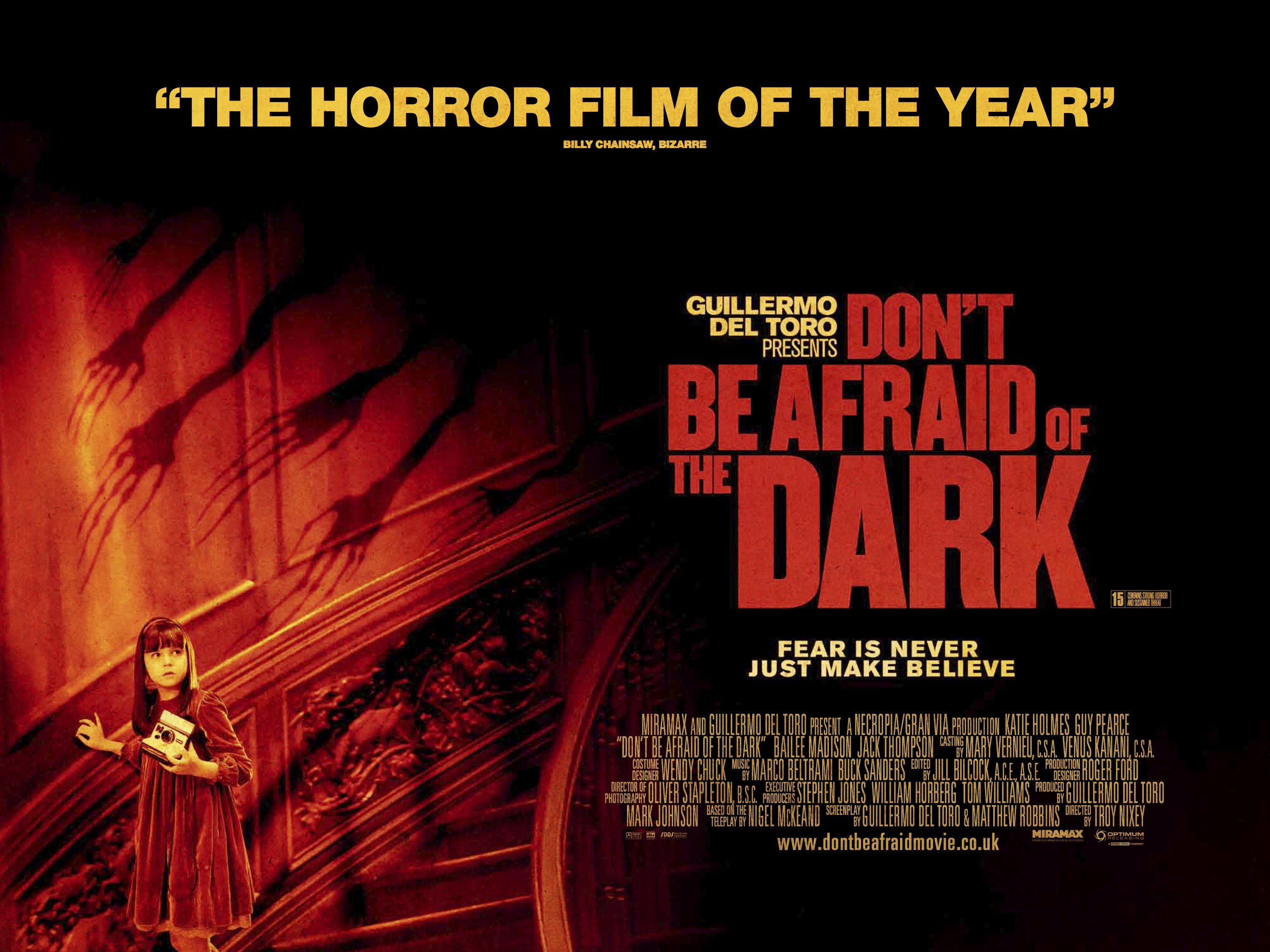





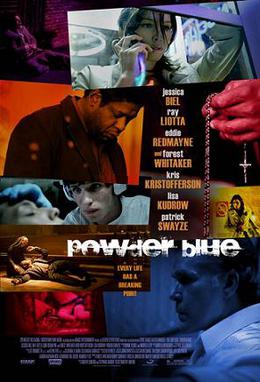






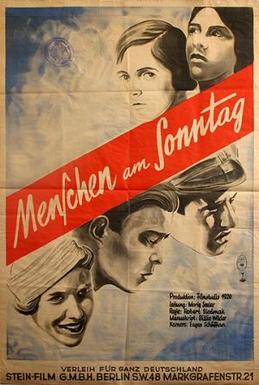




.JPG)


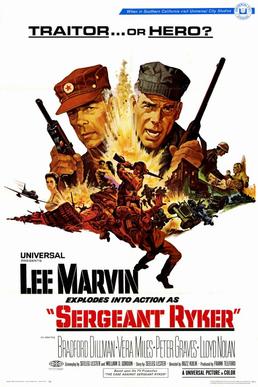
.jpg)






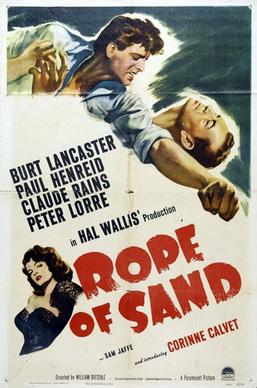


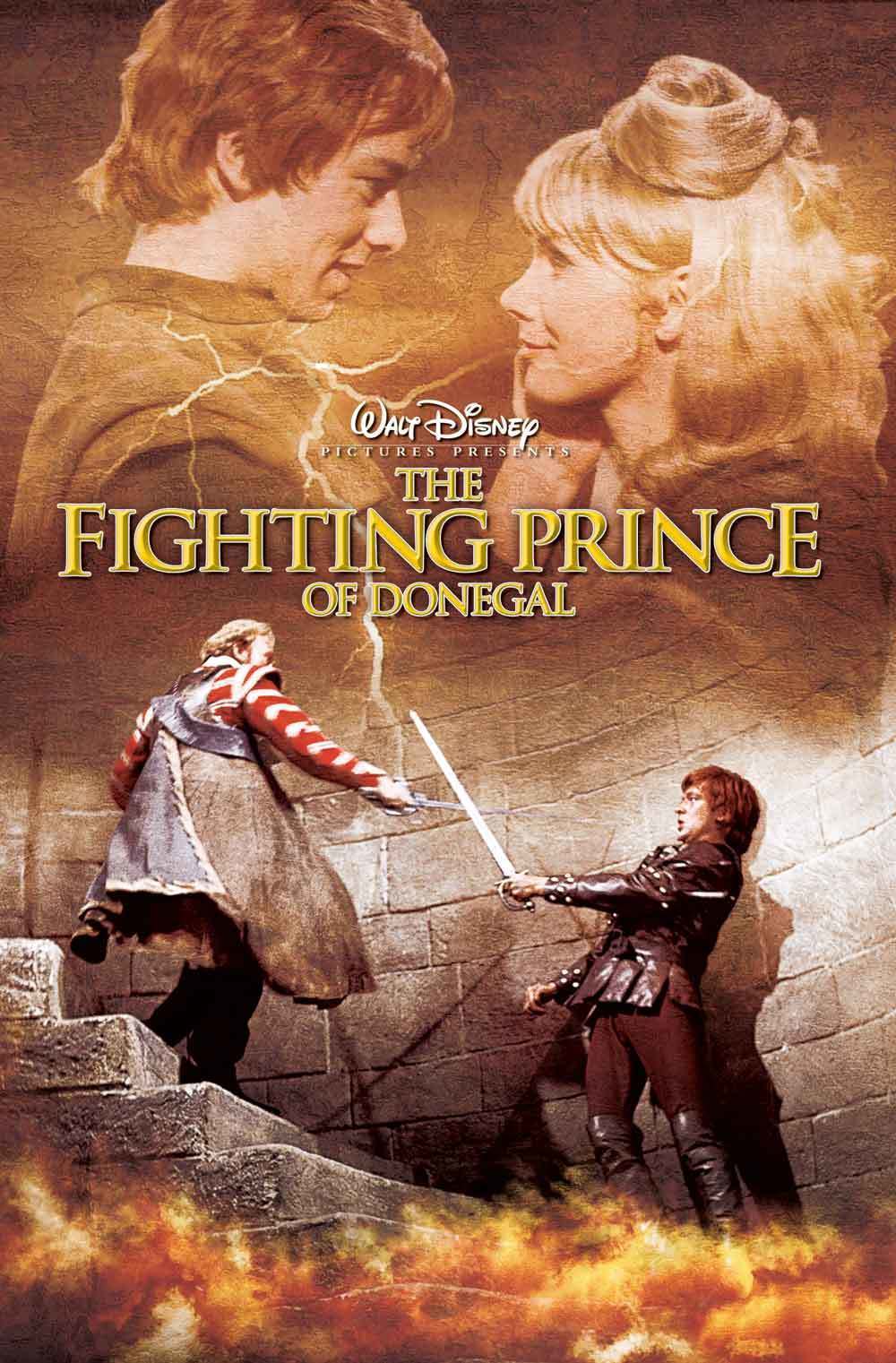
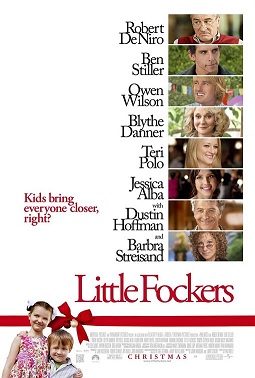


.jpg)




